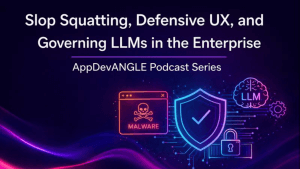Modern IT and application environments are highly distributed, dynamic, and increasingly complex. Organizations have deployed applications across private data centers, multiple public clouds, and edge environments, which creates numerous challenges when trying to ensure availability and optimize performance and experiences.
To effectively manage these modern environments, organizations require granular visibility across the end-to-end environment that is collected continuously. This is an important distinction from traditional monitoring systems, which sampled data every five minutes (granted these were largely static environments). In these highly dynamic or ephemeral environments where services are spun up and down in a matter of a few seconds, data needs to be collected virtually continuously.
The onset of observability solutions is driving organizations to collect all the metrics, events, logs, and application traces across these highly distributed and diverse environments. That makes it extremely difficult for a single tool or platform to collect all the data.
To optimize data collection, vendors are increasingly building open architectures capable of sharing detailed or intelligently correlated data via APIs. This approach enables operations teams to gather high-fidelity data from every part of a distributed IT and application environment and be used by the tools that require them.
There are numerous examples of this occurring where a specialist in a specific area has opened its APIs to enable organizations to leverage the granular data it collects. Just this week Aviatrix announced it would provide detailed data it collects from multiple public clouds to observability tools to accelerate problem identification and remediation. Also recently, we have seen an announcement from Gigamon stating it would send data to Cribl and last year NetScout opened its smart data to Splunk. There are numerous other examples as well that could be cited as well.
Ultimately, leveraging an ecosystem makes a lot of sense. The ability to leverage experts in a specific space (such as multi-cloud networking, packet capture, or applications) to feed observability or other tools to gain better insights and context to make better business decisions. These APIs need to be used for both data export and import and have applicability beyond observability tools, the ability to provide data to security, ticketing, or workflow management tools will also deliver significant value.
To regain control and operate more efficiently, organizations must extract data and insights from every part of their distributed environment. Given the complexity of these modern, distributed environments, this will require more than just a single tool. It will require an ecosystem of technology vendors with open APIs to deliver an accurate end-to-end view, enable greater operational efficiency, and ensure enhanced user experiences.



